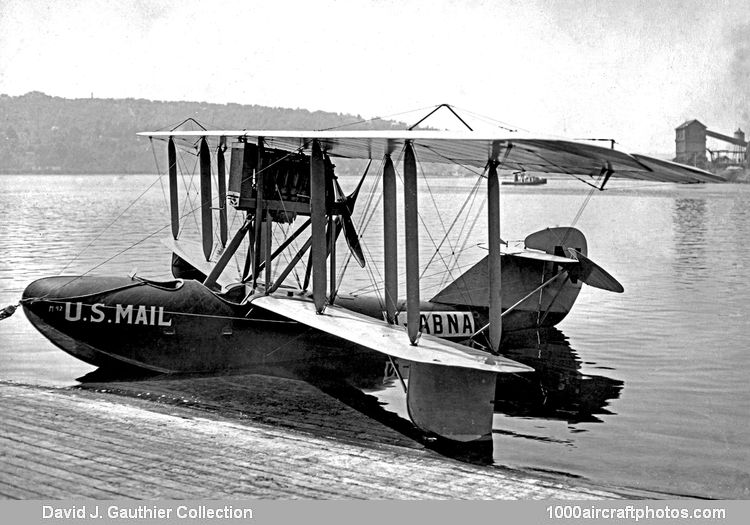The single B-1 was sold to Edward Hubbard and used for years on his Seattle, Washington, USA–Victoria, British Columbia, Canada air mail route. The original power plant was a 200 hp Hall-Scott L-6, so designated because it was a six-cylinder version of the famous wartime Liberty, but this was replaced by the standard 400 hp twelve-cylinder Liberty. Because of the Canadian registration requirement, the B-1 was registered as G-CADS for operation in Canada, this was replaced later by N-CADS.
After being substantially damaged from a crash on a flight from Victoria to Seattle on March 29, 1923, it was rebuilt and reregistered N-ABNA as an unofficial US registration scheme was set up by the National Board of Fire Underwriters in 1923 (N had been assigned as the identifying letter for US aircraft at the International Convention of 1919, but the US did not adopt the standardized scheme used by the other powers). When official US registration was adopted in 1927, the B-1 became 4985 and then 1974, which was later modified to NC1974 even though the aeroplane was never licensed and did not qualify for NC status.
The B-1 remained in constant use until 1928. It was eventually obtained by the Seattle Historical Society and set up as an outdoor display on Boeing Field in 1939. Weather and small boys took their toll, and the B-1 was dismantled, crated, and stored by Boeing until after WW II, when it was rebuilt and put on permanent indoor display in the Seattle Museum of History and Industry in 1954.
After a nine-year time lapse since the first B-1, Boeing assigned the designation B-1D to two aeroplanes designed in 1928 and built between May 1928, and April 1929. Company records carry them as four-seat cabin developments of the B-1 of 1919 but the only feature in common is the general layout of a biplane pusher flying boat. The only detail similarity was in the shape of the rudder, all other structural details being completely new.
The B-1D hull structure used wooden longerons to form a rectangular-section framework covered with cross strips of spruce veneer and the wings were merely shortened Model 40 panels that retained the asymmetric separation line of the upper wing on the port side of the engine mount. The first B-1D (c/n 1028, NC5270), which flew in April 1928, was fitted with a 220 hp Wright J5F Whirlwind radial engine driving a wooden propeller, but the second (c/n 1029, G-CASX) was fitted with a 420 hp Pratt & Whitney Wasp that gave it performance exceeding that of the later B-1E because of using the B-1E power plant in a lighter airframe.
Six aeroplanes were designated 6 B-1E, which was identical to the first B-1D except for heavier construction and a 410 hp Pratt & Whitney Wasp engine. Principal outward recognition features were the larger engine and a redesigned rudder. First flight of the B-1E was on March 4, 1928. Although carrying a later designation, the first B-1E carried an earlier Boeing serial number than the first B-1D: c/n 1027, G-CATY. The remaing five were assigned c/n 1071, G-CAUF; c/n 1072, NC116E; c/n 1073, NC117E (later CF-ABA); c/n 1074, NC115E; c/n 1075, CF-ABB."
|
A |
B-1 |
B-1D |
B-1E |
